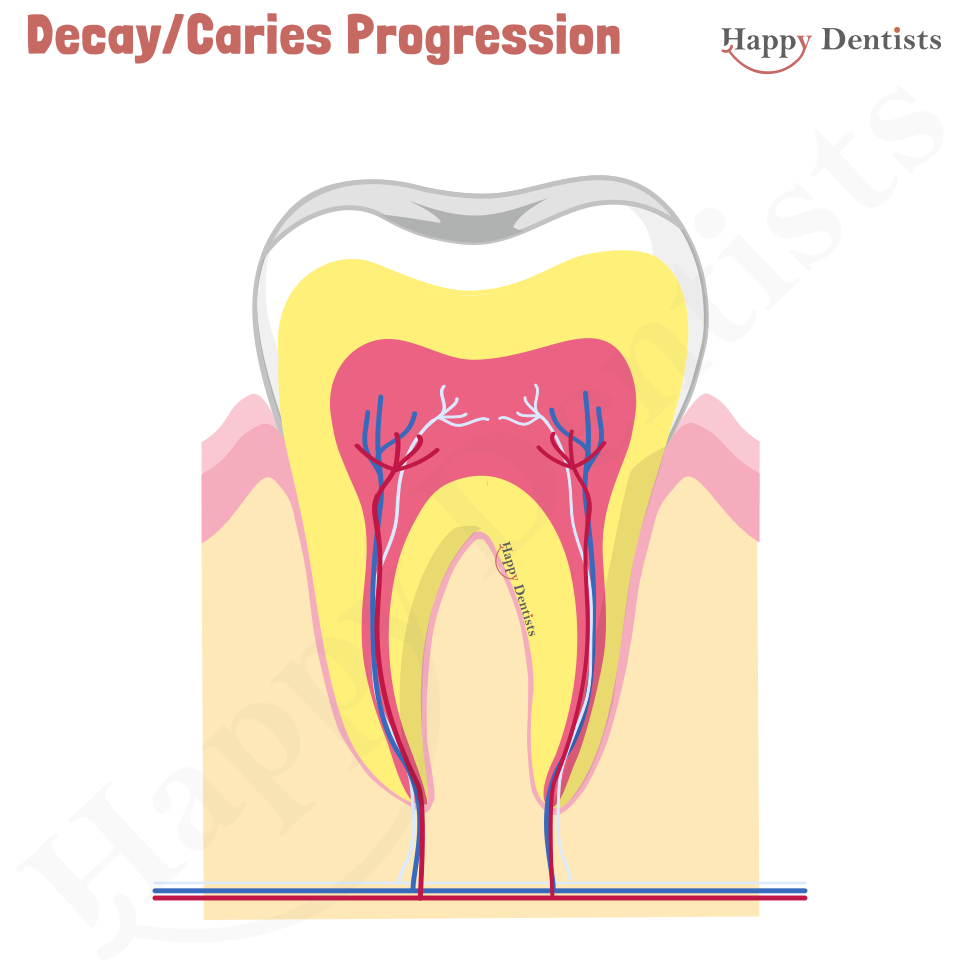Reversible Pulpitis
- What Is Reversible Pulpitis
- Signs and Symptoms
- Treatment
If caries/decay starts to progress towards the pulp, you can
have a condition called reversible pulpitis. This is when
the pulp tissue is mildly inflamed. If caught early and
treatment performed, it can allow time for the pulp to
return to a non-inflamed condition (Relatively Healthy
Pulp).
If you leave caries to progress after the signs from
reversible pulpitis, you then get a condition called
irreversible pulpitis which can be extremely painful. When
left to continue you then get pulp necrosis which is where
the pulp tissue dies. Once there is no pulp tissue, there is
nothing protecting the inside of the tooth anymore and it
allows bacteria and the caries to progress further to the
tip of the nerve resulting in apical periodontitis. Once at
the tip, it can then start to cause an abscess (collection
of pus) and then spread to the face (cellulitis) and then to
the rest of the body.
Pulpitis Progression is like the progression of a house fire. Where by the fire is the plaque imbalance/infection. The smoke alarm is the nerve of the tooth and the fire brigade is the dentist.

If you have finished reading all the information on this page, get a certificate for your hard work.
This page provides general information about dental topics. It does not contain all the known facts of this subject and is not intended to replace personal advice from your dentist. If your not sure about anything on this site, contact us or speak to your local oral health practitioner. Make sure you give your local oral health practitioner your complete medical history and dental history.
A selection of the references used:
Goldberg, Michel (2014). The Dental Pulp || Pulp Inflammation:
From the Reversible Pulpitis to Pulp Necrosis During Caries
Progression. , 10.1007/978-3-642-55160-4(Chapter 9), 125–139.
doi:10.1007/978-3-642-55160-4_9
Dimitroulis, G. (2008). Illustrated lecture notes in oral and
maxillofacial surgery. Quintessence Pub..
Douglass AB, Douglass JM. Common dental emergencies. Am Fam
Physician. 2003;67(3):511-516.
Beech, N., et al. (2014). "Management of dental infections by
medical practitioners." Australian Family Physician 43:
289-291.
Images adapted:
Adapted from free dental picture by authority dental" (CC BY 2.0) by Authority Dental